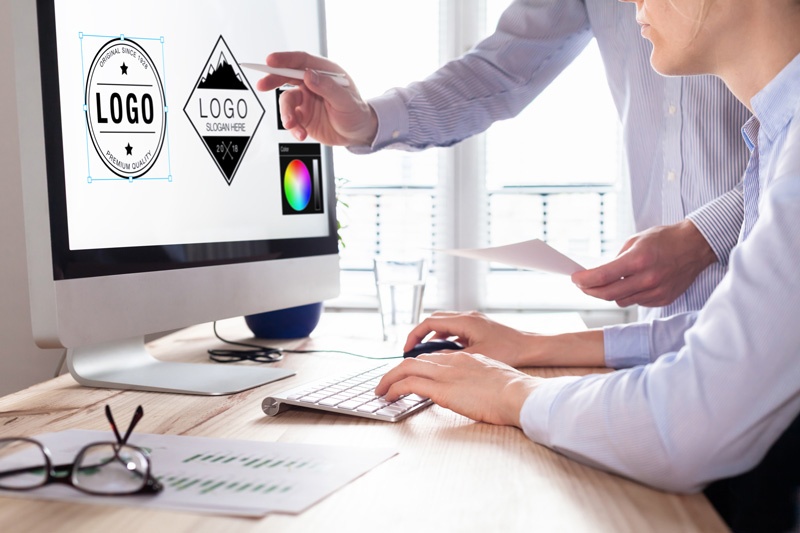
A logo is more than just an image; it’s the face of a brand, the visual embodiment of its values, and the starting point of its identity. A well-designed logo can leave a lasting impression on an audience, and it’s often the first thing that comes to mind when thinking about a brand.
It’s no wonder that logo design is a critical component of brand identity, and companies invest significant time, money, and resources to get it right.
With technological advancements, logo creation has significantly shifted in recent years. And one of the most important developments is the increasing use of artificial intelligence (AI) in logo creation and design, the advantages of which are discussed below:
1. Speed and Efficiency
The speed and effectiveness with which the logos can be created using an ai logo generator tool are among the most notable benefits of using AI.
With the power of AI algorithms, designers can create numerous logo variations in a fraction of the time it would take with traditional methods. This efficiency creates a more streamlined design process, allowing designers to explore various options and quickly achieve optimal results.
2. Cost-Effective
Traditionally, logo design involves a lot of manual work, which can be time-consuming and costly. This dilemma can make investing in high-quality logo design services difficult, especially for small businesses and startups with limited budgets.
Fortunately, using AI in logo design can significantly reduce the time and cost involved in the design process. By automating parts of the design process, AI algorithms can quickly and efficiently generate many logo variations, making it cost-effective.
With AI-powered logo design, businesses can get high-quality logo design services at a fraction of the cost, enabling them to create a professional and memorable brand identity without breaking the bank.
3. Consistency
Maintaining consistency in logo design can be challenging, especially when designing for multiple platforms and materials. Inconsistent branding can confuse customers and undermine the brand’s credibility.
The good news is that AI in logo design ensures consistency across platforms and materials. Algorithms enable designers to maintain uniformity across channels, including websites, social media, and print materials. This consistency also fosters a cohesive brand image that bolsters customers’ trust.

With AI, businesses can establish a strong brand identity and enhance their reputation in the market, setting themselves apart from competitors. If you want to ensure consistency in your logo designs, think on hiring an agency to do the job.
4. Customization
AI allows designers to create unique logos that reflect a brand’s personality and meet specific business requirements. It can generate logos based on particular criteria, such as target audience or industry, and incorporate specific colors, fonts, or icons to create a distinct visual identity.
Suppose you run a winery. With AI, designers can create a logo that reflects your winery’s style and values, such as a grapevine or wine glass logo.
Additionally, AI can help create a logo that resonates with your target audience, such as a logo that represents your commitment to sustainability if your winery specializes in organic wines.
5. Inclusivity And Diversity
Generative design uses AI algorithms to create designs automatically. It analyzes cultural and societal trends to generate logos representing a brand’s values while promoting diversity and inclusivity.
Inclusivity means designing for a diverse range of people, considering differences such as gender, race, ability, and more. It helps create a welcoming, inclusive logo that avoids exclusion or offensive design elements.
When used together, generative design and inclusivity produce logos that look amazing and embody a brand’s commitment to diversity and inclusivity.
Limitations of AI in Logo Creation and Design
While AI can be a valuable tool in logo design, it does have its limitations. Here are some potential drawbacks and the importance of human input in the design process:
Drawbacks of relying solely on AI in logo design:
- Limited creativity and innovation compared to human designers
- Lack of emotional and cultural context that only humans can understand
- Risk of producing generic and unoriginal designs
Importance of human input in the design process:
- Human designers can bring creativity, intuition, and emotional intelligence to the process
- Human designers can understand the cultural and emotional context of the brand and its target audience
- Human designers can produce unique and original designs that stand out in the market
It’s important to balance AI with human input to overcome the limitations of relying solely on AI in logo design. Designers can leverage AI but use their creativity and expertise to refine and enhance the designs.
By combining the strengths of AI and human input, businesses can achieve the best logo design for their brand.
Conclusion
To sum up, AI technology can bring many benefits to logo creation and design. However, it’s important to remember that AI does not replace human creativity and logo design expertise. The key is to strike a balance between leveraging the strengths of AI and human input to achieve the best possible logo design.
As you embark on your logo design journey, consider how you can utilize AI to streamline your design process while still allowing for creative input. Try it and see how it can enhance your brand’s identity!

